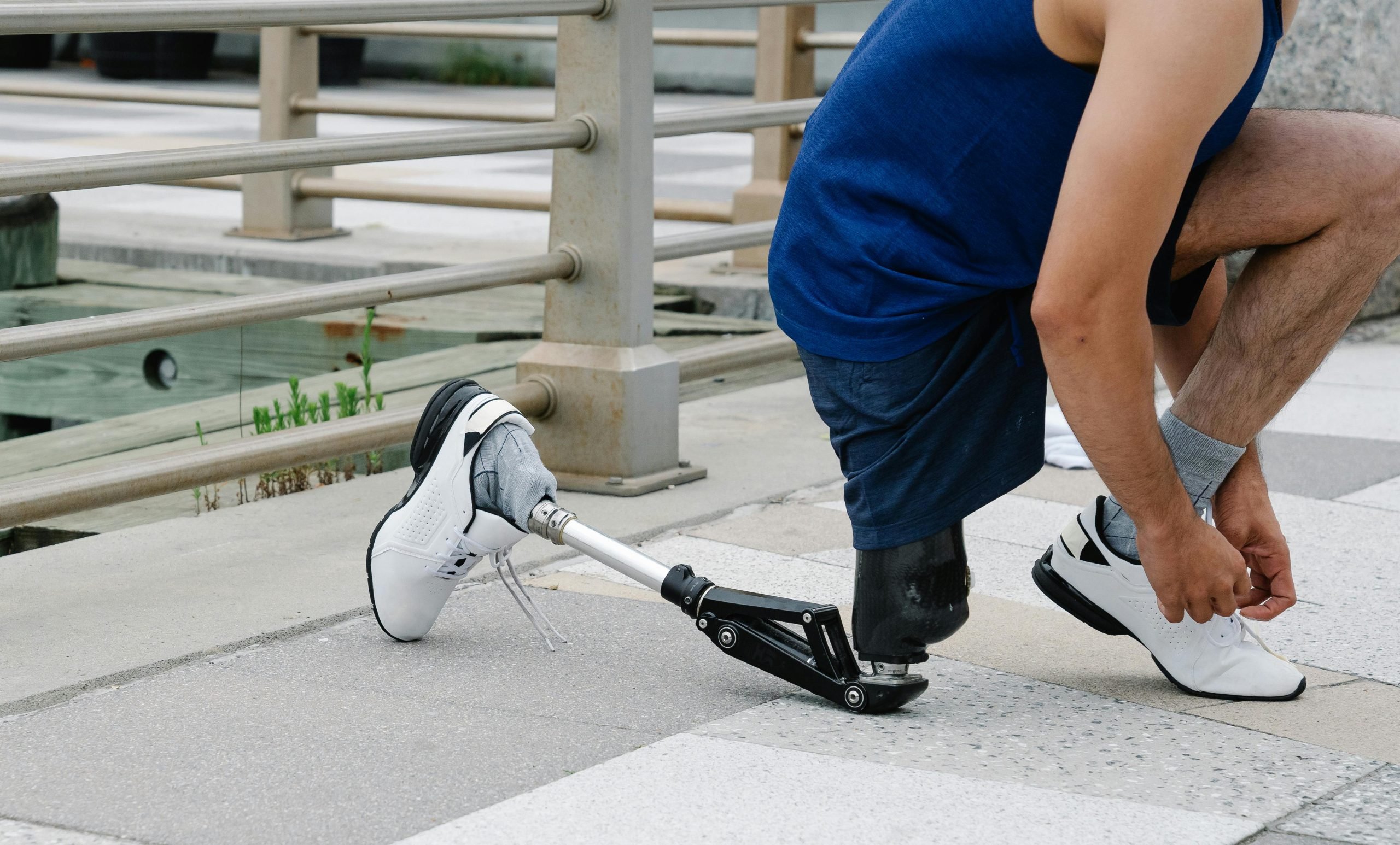
Photo by Lara Jameson from Pexels
New Prosthetic Interface Lets Amputees Control Limbs with Their Minds
Researchers from MIT and Brigham and Women’s Hospital have developed a revolutionary prosthetic limb that allows users to achieve a natural walking gait through full neural control. This groundbreaking innovation offers amputees improved mobility and proprioceptive feedback.
MIT’s study, published in Nature Medicine, involved seven patients who underwent a surgical procedure called the agonist-antagonist myoneural interface (AMI). Traditional prosthetic limbs rely on robotic sensors and predefined gait algorithms, often resulting in unnatural movements and limited control. The AMI procedure, however, connects the two ends of amputated muscles, preserving their natural interactions and providing proprioceptive feedback. This feedback allows the brain to sense the limb’s position in space, significantly enhancing movement control.
“This is the first prosthetic study in history that shows a leg prosthesis under full neural modulation” says Hugh Herr, a co-director of the K. Lisa Yang Center for Bionics at MIT and senior author of the study. “No one has been able to show this level of brain control that produces a natural gait, where the human’s nervous system is controlling the movement, not a robotic control algorithm.”
In various tests, including navigating slopes and stairs, AMI patients demonstrated superior performance compared to those with conventional amputations. The sensory feedback, although less than 20% of what non-amputees receive, was sufficient to restore significant neural control, enabling users to adapt their gait in real-time.
AMI surgery offers several benefits beyond a natural gait. Patients who received the surgery also reported less pain and muscle atrophy.
This advancement points to a future where prosthetic limbs are seamlessly integrated with the user’s body, providing a more natural and intuitive experience.
Herr explained: “The approach we’re taking is trying to comprehensively connect the brain of the human to the electromechanics.”
While further research is needed, this groundbreaking surgery offers hope for amputees. The ability to walk and move with a more intuitive connection to their prosthetic limb, rather than relying solely on robotic controls, represents a significant step towards a future where amputees can experience a new level of freedom in their daily lives.


 Previous Story
Previous Story

 Latest articles
Latest articles 

Leave a Comment
Cancel